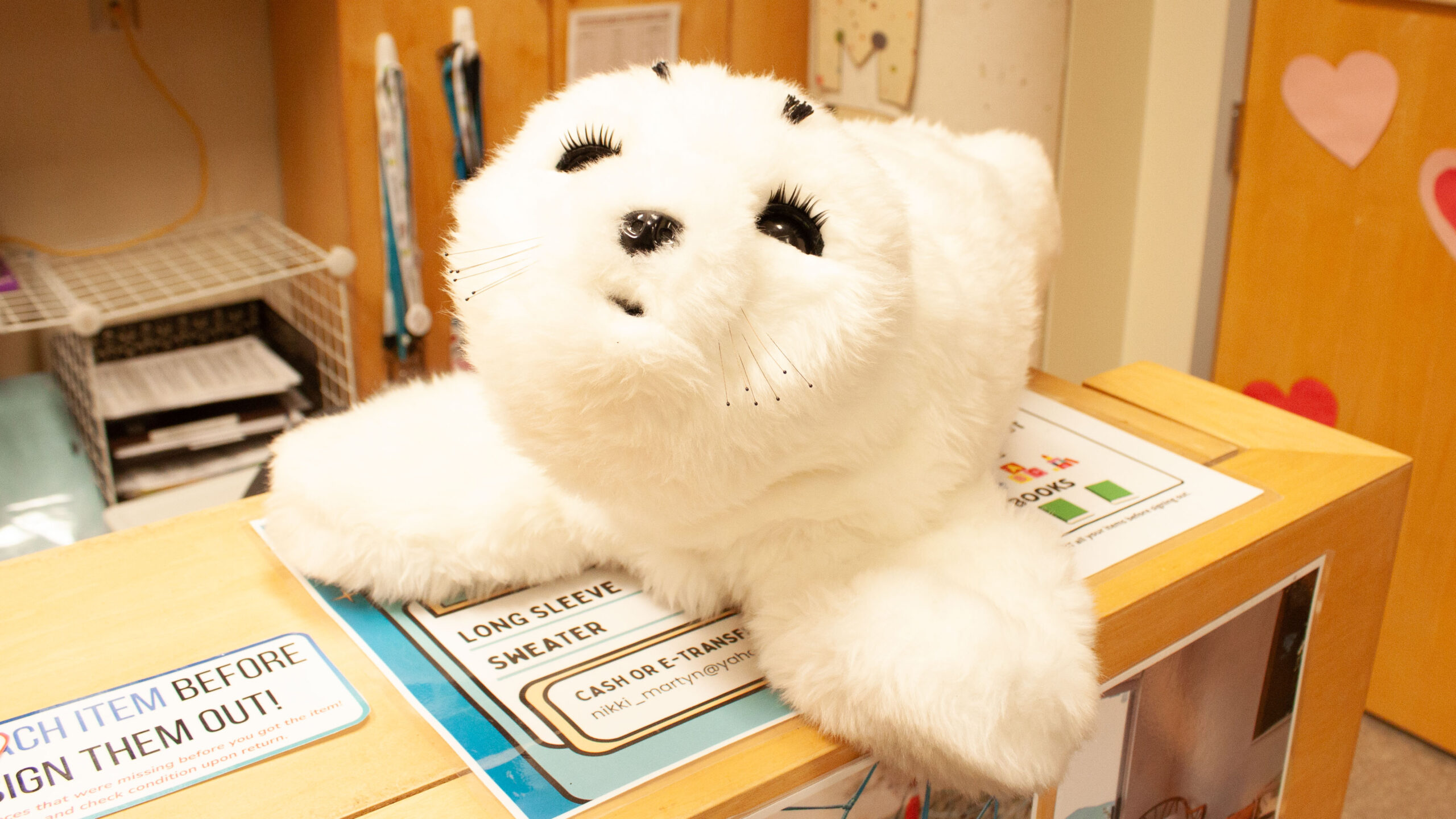In an advancing technological world lives a white, fluffy robotic seal on the University of Guelph-Humber (UGH) campus in northwest Toronto. reduce the number of returns between grafs to one.
Paro, the therapeutic seal, was designed by Japanese robot scientist Takanori Shibata and is modelled after an experience he had in the Gulf of St. Lawrence with a baby Harp seal.
Initially, Paro was designed for dementia patients to make a connection with something that responds to their actions.
Since its debut in 2004, Shibata’s creation has caught the attention of various institutions worldwide since its debut in 2004.
Two years ago, a Paro unit had migrated to the Early Childhood Studies (ECS) program at UGH.
A Paro unit costs £6,000 (around C$10,220) excluding tax and comes in four colours: tan, grey, white and pink.
Nikki Martyn, program head of the ECS program, says Paro is a key element in educating the developing brain on “healthy technology.”
“What we know about working with young children is all experiences young children have, affect their development,” Martyn said.
“Who you are today is because of the experiences you had when you were little,” she said. “That gives us this opportunity that I think is really important in life, to be able to educate and support our future professionals because they’re the ones that are going to make this impact with young children.”
Paro is one of the many robots used ECS to educate students about how to introduce technology to young children.
Another one of these educational tools is Ozobot, a tiny wheeled bot which can be coded to follow a path on its board game-like surface.
The bot utilizes pathing technology, which can be used, for example, to educate children on how planets orbit the sun.
However, Paro is quite different from the rest of the bots in the ECS resource room, both in purpose and design.
In contrast to Ozobot’s codable actions, Paro has no customizable code and responds to human interaction.
Martyn said the simplicity of Paro is one of the things that makes it such a great display of healthy technology.
“There’s no videos, it’s not connected to Wi-Fi,” she said. “Really thinking about the privacy of it, it’s safe.”
Paro hosts diverse sensors that allow it to detect touch, light, sound, temperature and directional orientation.
Patting its head will make Paro calm, its movements slowed as it projects a soothing tone. Touching Paro’s flippers makes it shy, and it will move its limbs away from the person touching it.
Paro’s battery can support movement for around five hours, according to its training guide.
Being a baby, Paro’s charging cable plugs into its mouth and mimics a child’s pacifier. It also features antibacterial fur which can be cleaned with sanitizing wipes.
Cari-Ann Scott, interim assistant program head of the ECS program and the Early Childhood Studies Degree Completion (ECDC), said Paro has many uses and can be a comfort tool for anybody.
“Children on the spectrum, children with anxiety, children that are human,” Scott said. “We have lots of people that come in and have said I just needed some Paro time.”
Scott said another application for Paro is in environments where live animals aren’t preferred such as hospitals or other circumstances that involve animal allergies.
Paro is usually found charging or interacting with the public in the Early Childhood Resource Centre located in room GH318 on the third floor of the campus beside the spiral staircase near the elevators.
Paro, alongside the ECS’ passion for technology and the learning lessons that come with it, has given the faculty and students in the ECS program a new opportunity for the upcoming fall 2024 semester. The Children’s Futures is a specialization that will be made available for ECS students in the next fall term.
Martyn said the purpose of this program is to create an educational space where children are at the centre of it all.
“We’re allowing kids to think in their unique way and be who they are,” she said.
The specialization will cover privacy, ethics, future thinking and approaching technology holistically. The program will help ECS students educate children about how social media algorithms work to enhance online privacy and safety.
ECS students will also be prepared to teach children how to read terms and conditions agreements, Martyn said.
The Children’s Futures course is focused on the human mind and helps educate children to develop problem-solving skills.
Martyn said being future-focused is important because it allows ECS students to adapt to the constantly evolving world of technology.
“The students have all of this expertise and experience in child development and teaching and curriculum. I’m hoping we can take that into the children’s futures and really put children at the center of everything we do,” she said.
Martyn said giving children a safe space to be creative, play and explore while educating them about how to use technology safely is key in preparing them for the future.
“Innovation occurs in the creativity, in the play, in the disruption,” she said. “Those are the people that are going to change the world.”

